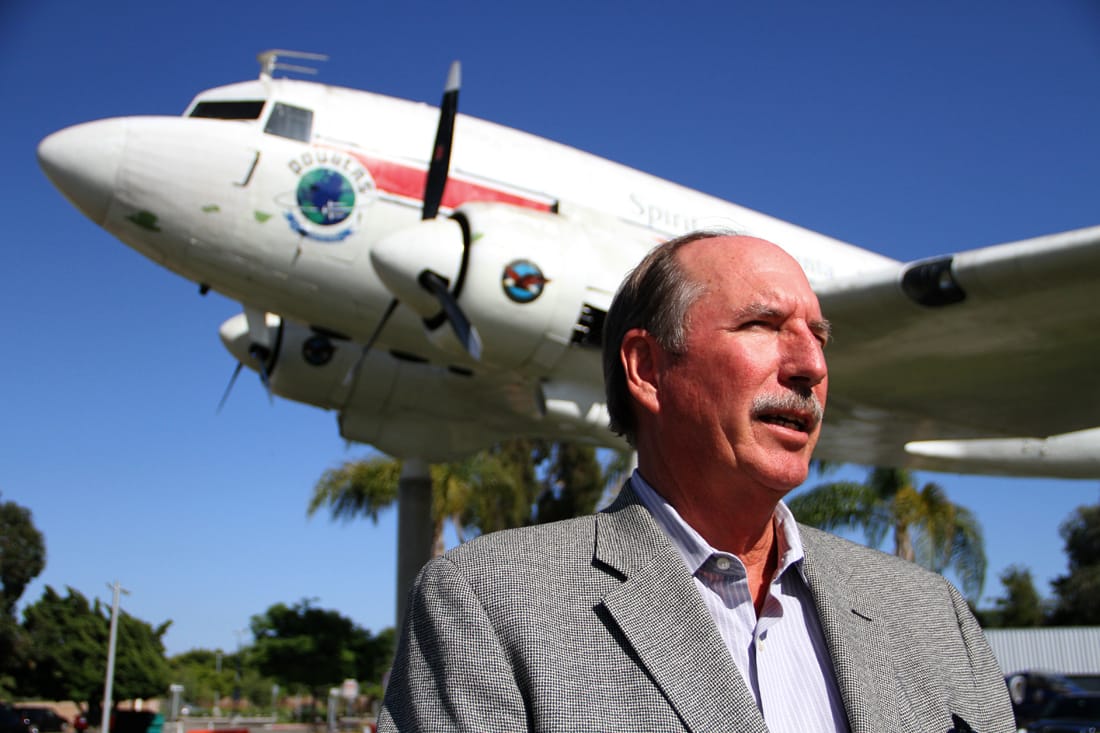
SMO — After 17 years on the job, Santa Monica Airport's manager Bob Trimborn is taking off from SMO, leaving behind an airport fundamentally different from the one he took over and heading toward an uncertain future.
While at the helm, Trimborn watched as the business and technology of flight evolved, causing a dramatic shift in use at the airport from small planes to private jets that waned as the economy weakened.
With the changing times came tension with nearby residents, some of whom live within 300 feet of the airport's runway and, depending on which side of the airport they live, have fears of toxic jet pollution, constant noise and the very real possibility that a plane might fall out of the sky and onto houses.
And, although the airport is best recognized by the airplanes that take off and land each day, it remains one of the largest stretches of lightly developed land in Santa Monica, 40 acres of which supports a diverse ecosystem of businesses, restaurants, educational spaces and art, all of which fell under Trimborn's purview.
It was a balancing act that Trimborn carried out with skill, said Rod Gould, Santa Monica's city manager.
"The city owes him a debt of gratitude," Gould said.
A love of aviation grew in Trimborn from an early age when his father took 4-year-old Bob to see planes flying.
Trimborn got the chance to pilot an aircraft on his own at the age of 14 when he went to Hawthorne Municipal Airport with $5 and a coupon in his hand.
He would go on to manage that airport for nearly 10 years and establish events that introduced tens of thousands of people with no connection to aviation to the wonder that Trimborn had for flight and how it progressed over its short, 100-year existence.
In the mid-1990s, Trimborn came to Santa Monica Airport, a site with a rich aviation history that he would endeavor to show the world. Pioneers of flight like Amelia Earhart and Bessie Coleman flew from its runway, and the predecessor of the modern jet built by Santa Monica-based Douglas Aircraft was constructed there.
Trimborn's passion for the story behind SMO and the innovations in flight that occurred there became the driving force behind efforts to install a monument to Douglas Aircraft in the form of one of its early innovations, the DC-3.
A plane, donated by the Museum of Flying, was mounted as though in mid-flight, immediately in front of where the reopened museum would take shape in 2012 after a 10-year closure necessitated by economic hardship.
The monument and the museum remain two of Trimborn's favorite things about his time at SMO.
"If I leave my thumbprint on this airport, I hope this is it," Trimborn said last week as young children from a science and technology camp played on the grass under the giant airplane, waiting for their tour of the museum to begin.
Other aspects of the job were less rosy.
When SMO opened in 1917, it was surrounded by empty land. Nearly 100 years later, Santa Monica transformed into a town of over 90,000 people with an easterly neighbor with almost 3.8 million more, and those who lived nearest to the airport began to question its place in the densely populated area.
"Keeping the airport safe and compliant while being compatible within this highly urbanized environment is what I've been trying to do my entire career," Trimborn said.
Many have loudly said that it wasn't enough, and those voices have only gotten more prevalent in recent years as 2015 approaches. That's the date that many believe City Hall will gain more control over aviation uses at the airport, and some hope that it will give officials the ability to close the facility or make it so difficult to use that air traffic will ultimately die out on its own.
Many of the same voices question why Trimborn and other city officials have not done more to protect them from the conditions created by SMO, what they describe as constant noise and danger from planes zipping by overhead.
Airport Commission meetings can draw a capacity crowd of angry residents, both from Santa Monica and the surrounding communities.
Trimborn did what he could within the framework of local and federal law, and handled the criticism with grace, said Ofer Grossman, a former airport commissioner.
"Bob was a good airport manager, who spearheaded many initiatives that were aimed at improving conditions at the Santa Monica Airport," Grossman said. "Although he was often maligned by some community members, in my experience, he conducted himself with integrity and even temper."
City Hall will continue to grapple with the future of the airport in Trimborn's absence, and his operations manager, Stelios Makrides, will take over as interim manager until a full replacement process can get underway.
City officials will push forward with the process in his absence, although his knowledge of aviation has been valuable, said City Councilmember Terry O'Day.
"Bob's experience and knowledge will be missed as he will be personally, but we're all very engaged and I don't think you're going to see changes in direction as a result of his departure," O'Day said.
As to why he's leaving now, Trimborn would say only that "it is time," although he has no intention of leaving the aviation community for good.
"I'm not going to sit back and watch soaps," he said.
ashley@www.smdp.com

